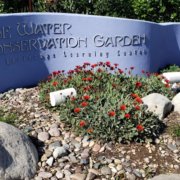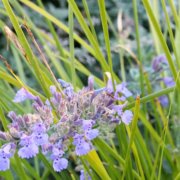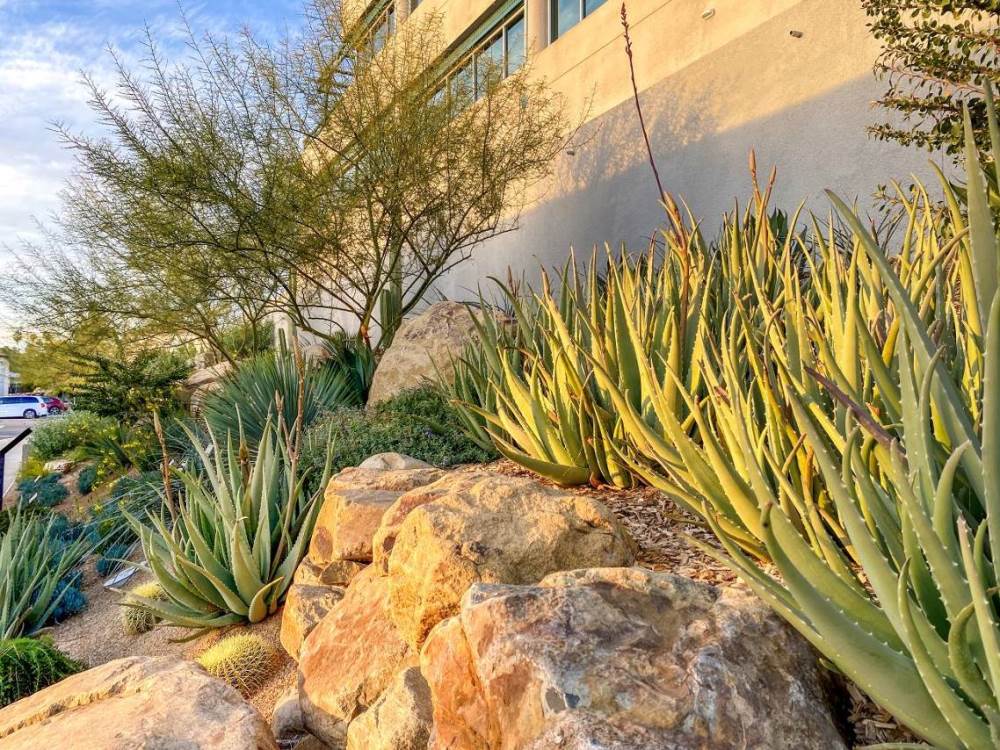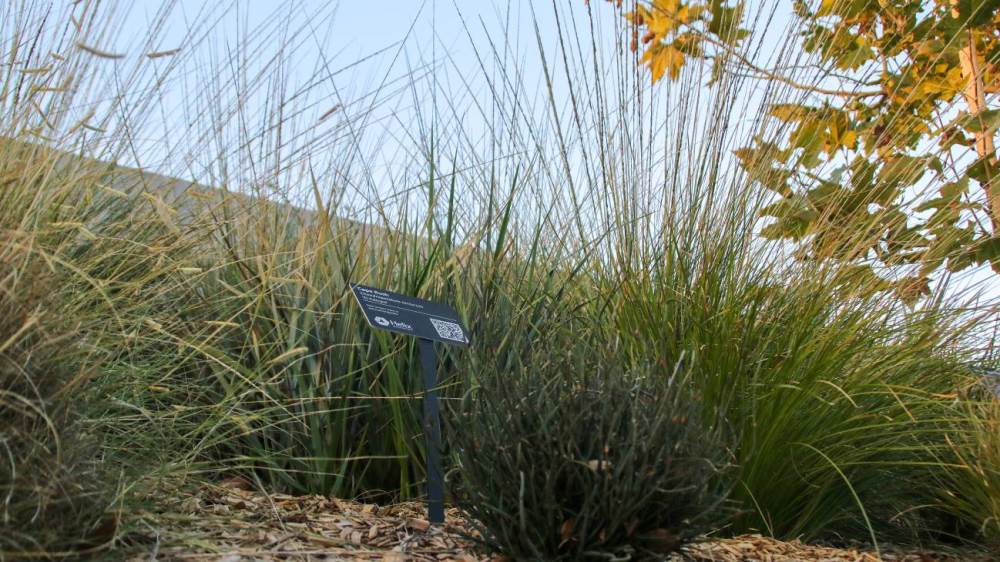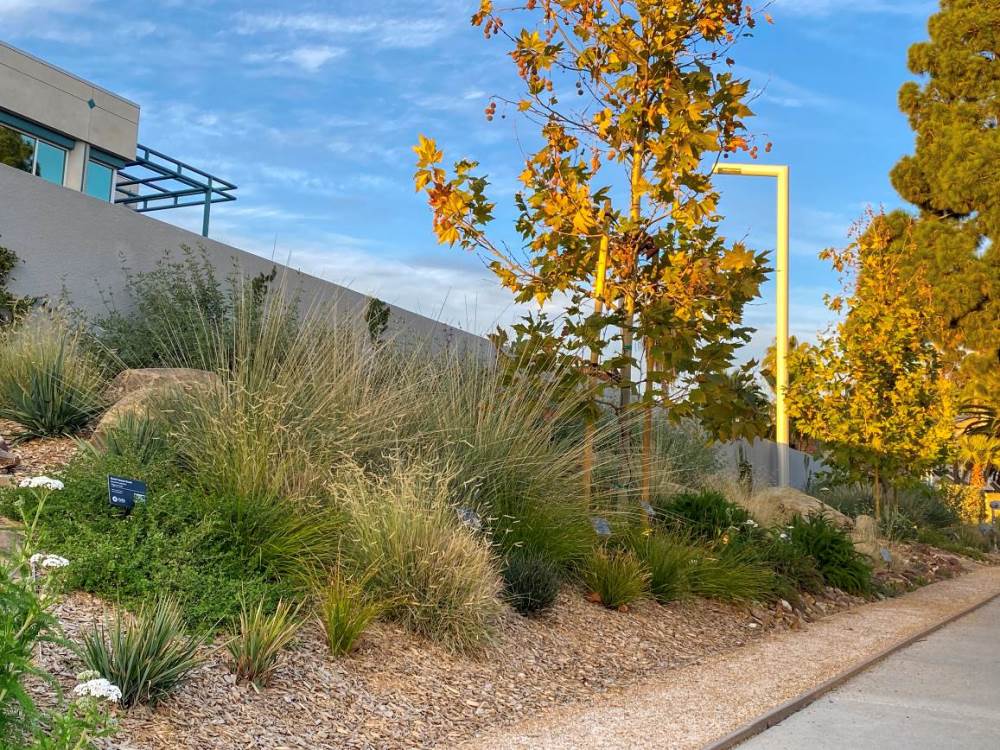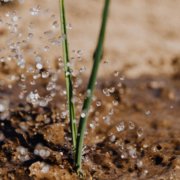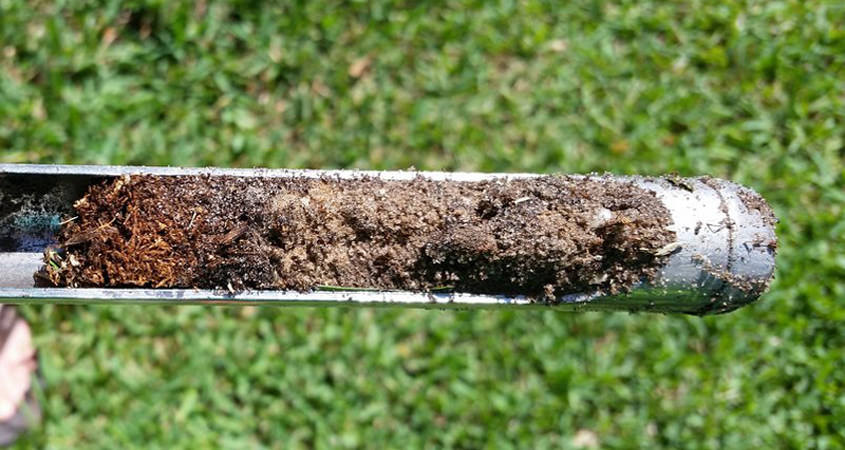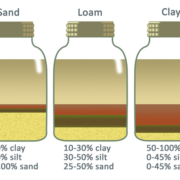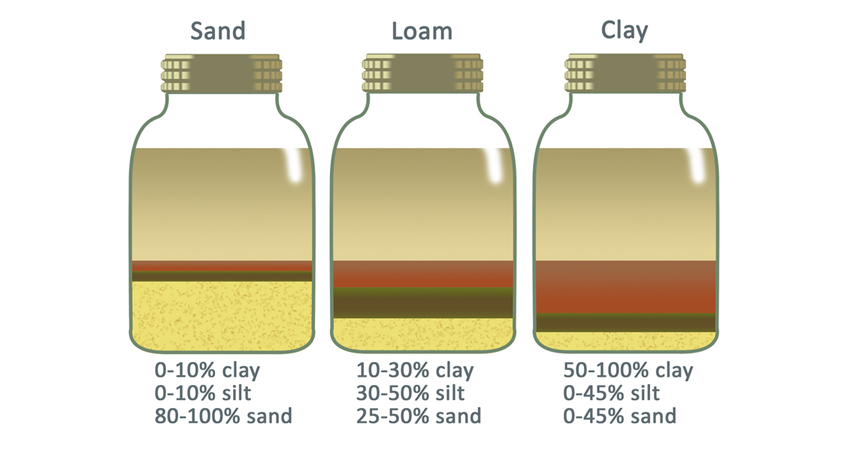Water Conservation Garden Growing Strong With New #FreeDayFriday Program
In a normal year, The Water Conservation Garden in east San Diego County provides resources and education for 88,000 children and families annually. Due to the coronavirus pandemic, meeting the Garden’s mission took a little extra effort and creativity.
To remain open after its initial closure and re-opening in June 2020, the Garden now charges a small admission fee. Thanks to the new #FreeDayFriday initiative, supported by a donation match through the Rice Family Foundation, more than $60,000 in contributions now allows the Garden to offer free admission on the second Friday of each month, starting February 12.
“We can now create #FreeDayFriday so every person in the community, no matter their ability to pay, can enjoy all the Garden has to offer,” said Jennifer Pillsbury, Water Conservation Garden executive director and CEO.
The Garden continues operations under safety modifications

Outdoor fitness classes including yoga are popular at The Garden. Photo: The Garden
Since its reopening to the public on June 16, the Garden continues to offer programs with modifications under California health and safety guidelines due to the pandemic, including limiting visitor admissions and requiring masks.
The Garden’s series of fitness and wellness programs remain on site, including outdoor bodyweight workout classes and yoga sessions. Classes take place mornings and evenings, including a family yoga program for kids. The full schedule is available on the Garden’s new website.

Pam Meisner, AKA Ms. Smarty Plants, offers the Garden’s elementary school education program virtually. Photo: The Water Conservation Garden
The Garden’s elementary school education program featuring Ms. Smarty Plants is now available online for grades K-2 and 3-6, including full lesson plans and video. Safely distanced Family Field Trips are also available for schools, homeschool groups, and individual classes.
“Our garden, not only is it an educational site, but we have classes that coincide with how to make what you see at our garden happens, where to buy the supplies, and how to do it,” said Pam Meisner, director of operations and education and founder of the Ms. Smarty Plants program. “We are the go-to place in San Diego for sowing beauty with low water use plants.”
“We can’t survive without water. But people don’t value that. One of our reasons being here is to show them the value of water and make that part of your life,” added Meisner.
Classes on sustainability, gardening, and art are currently offered online. Professional one-on-one phone or video consultations on water harvesting, and how to set up, retrofit, and maintain your irrigation or landscape are available by reservation through the website at thegarden.org/consultations
To support the Garden through the ongoing #FreeDayFriday program, visit FreeDayFridays.org.
A task force of water agencies and municipalities conceived the Water Conservation Garden in response to six years of drought in San Diego County.
Otay Water District, Helix Water District, and Cuyamaca College kick-started the effort in 1990. By 1992, the San Diego County Water Authority, City of San Diego, and Padre Municipal Water District joined the effort, forming the original Water Conservation Authority.
The following year, the Grossmont-Cuyamaca Community College District approved the establishment of a 4.5-acre Water Conservation Garden adjacent to Cuyamaca College.

